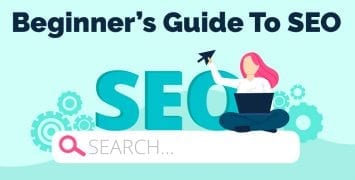Content creation and marketing is something that every entrepreneur should be aware of because it can be monumental in increasing the traffic to a website. Content creation, therefore, should be something than an entrepreneur knows inside and out. Content creators are the people who know the most about actually putting together content, but it is in the best interest of entrepreneurs to understand some home truths about content creation.
Table of Contents
Content that Evokes Positive Feelings is More Popular
People like feeling good. The best stories are those that have happy endings and, although tragedies do evoke some pretty powerful feelings, the evocation of joy usually surpasses these. Positive feelings tend to have a much better user response than negative feelings. Dealing with things like joy and celebration is what you should be building your successful content plan around.
Good Content Helps the Reader
There have been a couple of attempts to define what can be taken as “good content”. All things considered, good content is content that gives something back to the reader. Whether it teaches them something new, expounds on something they already know, or gives them a different point of view on something they already have an opinion on, good content incorporates these things to add value to a reader’s life.
Content is Nothing Without a Plan
As much as you would like to have content simply get on the scene and convert customers right away, thisn’t a viable point of view to have. Content works with other content pieces to generate an overall effect that encourages the customer to respond to your call to action. Unless you have an end result for your content plan you’re shooting without a target, usually with the same results.
Content Creation is an Ongoing Affair
What a content producer quickly learns about content is that there can never be enough. Regular content production means that before you’re even aware, you’ve exhausted your original supply of topics and have to find places to draw inspiration from for your future discussions. It’s easy to get a handle on where other content producers look to for inspiration, but yours might not even be of the same type or flavor; because you are always going to need fresh content, you’ll always need to be creating new content.
Content Creation Sometimes Requires Thinking Outside the Box
Some of the most popular content campaigns were based around content production that was non-traditional. They worked because they were new and innovative and worked to motivate the reader in new and interesting ways. The aim of content production is to go viral and the best way to do this to identify with your customer. The more outlandish your content, the more likely that people will share it and spread the word. Different is cool.
Use Key Knowledge of Content Production to Your Advantage
As a business owner, content production might not even be something you see on your radar. However, based on how much it impacts any particular business, it should be something that each and every business owner should be aware of. Knowing the key points in content production makes you much better suited to direct and oversee your overall content marketing plan.

Creating High Ranking Blog Content
Do you want to dominate the SERPs?
Of course, you do..that’s why you’re here. For those of you that are writers, or even those of you that are not these tips are going to change the way you write blog content.
Writing niche articles that provide value and keep the attention of readers is the goal.
Value + quality = smiley face.
Consistently writing short-form content is challenging enough. But to attract hundreds, even thousands of links and dominate the SERPs, you’re going to need more.
The common standard of the past for blog content was about 300-500 words. But even back then, they knew the potential value of long-form content.
Long-form content gave birth to the next generation of content. Skyscraper content. It’s tough to write but gets incredible results.
So, do you want to know how to create it? Well, that’s exactly what you’re going to do in this post. Let’s get you started on learning how to find the right keywords, how to outline and create compelling big content and even hire writers if you don’t want to do it yourself.
Why such huge content?
The answer to that is actually three answers.
Bigger Ranks Better
The longer the content, the better it ranks. This has been proven time and time again by tons of studies.
We’re sure you’ve heard of Hubspot. Well, their studies found that bigger content inevitably gets more links. And Backlinko found that longer content outperformed shorter content on the SERPs.
We could go on listing all of the studies that prove this theory, but let’s not put you to sleep.
Disclaimer: Longer content is proven to rank higher, but that doesn’t mean you need to turn 800 words into 5,000. The truth is, the length of the content entirely depends on the content itself. If it only takes a few hundred words to adequately cover a topic, don’t stretch it out just to reach a word count. You want to provide the best value in the best way possible.
Longer is More Shareable
This one isn’t all that surprising. The longer and more informative the content is the more likely it is to be shared. And shared a lot.
A study from BuzzSumo found that not only are long-form content pieces rarer, but they are shared more often.
This means a couple of things.
- The lane for writing long-form pieces is not only better, but there are fewer competitors on that road
- People quality and effort of long-form and consequently read and share the content
Google’s Secret Ranking Factor: Topic Relevance
By now we’re assuming you know the ranking factors for blog content. But if you don’t, here are a few to get you started.
- Quality of your content
- Mobile-friendly
- Backlinks
- On-page engagement
If you want more of the most important ranking factors you can check out this great piece from Search Engine Journal. If you’re an SEO nerd like we are, here’s a comprehensive list to get lost in.
There is one ranking factor that is often forgotten: topic relevance.
What is it? Well, Google understands whether a search is a query or a topic.
For instance, if you were to search “Michael Jordan age”, Google recognizes this as a query and doesn’t need a long answer.
If you were to search “Michael Jordan best game”, Google understands this as a topic and wants a longer answer to describe it.
This longer answer is in-depth, long-form content. Therefore it will rank higher for topic keywords.
Ok, so bigger is better…now how do I create it?
We know what you’re thinking. Yeah, great…bigger content is better, but how do I go about creating these colossal pieces of greatness.
Even for veteran writers, creating in-depth valuable pieces of content is a challenge. It takes a ton of research and even more effort to naturally write an effective piece.
If you’re not a writer, this may seem impossible.
If it were, you wouldn’t be trying.
This for the determined, the motivated and the marketer that understands the power of great content
Below are the steps you can use to create in-depth and valuable content.
Pick the Best Target Keywords
When you’re sitting down and preparing to write a long-form piece of content, the keywords you decide to target is extremely important. You don’t want to spend hours upon hours researching and creating a piece of content if the keywords you choose make it impossible to rank.
You want to find the sweet spot when choosing keywords. A perfect balance between traffic, competitiveness, and intent.
Search Volume will paint a picture of the number of customers you will eventually get.
You can use a free tool like AdWords Keyword Planner that can give you a pretty good idea of keyword search volume. For more specific metrics, services like Ahrehfs Keyword Explorer charge a small fee.
Search volumes can help you predict your traffic volume and get a better idea of what will produce a positive ROI.
An easy formula for this below.
Search Volume * CTR * Conversion Rate * Customer Lifetime Value (LTV)
If you’d like to see how your exact position matches up with CTR’s, Advanced Web Rankings has a great study to show the correlation.
Using the formula above you can figure out how much you need to spend in order to retain a positive ROI.
The strength of your competition will affect how well your big ‘ol content piece does.
Combine This With Cluster Content
Cluster Your Content For Better Results
Cluster content, also known as “pillar-and-cluster” was first detailed by HubSpot in early last year. It can be used by both B2B and B2C companies to build out their content strategy and marketing.
Given that we’re an SEO company, we have our own unique take on cluster content. For a good read on the original idea, try this!
This model simplifies a posting schedule by creating a central topic (pillar) and several “clusters” that are written to explain the central topic further. These clusters can also be viewed as subtopics. These subtopics will link to the pillar content (and vice-versa).

This organizational structure proves to Google that you’ve built a semantic relationship amongst your posts, taking care of its latent-semantic indexing algorithm which will push topics up further in SERPs.
Here’s How to Make it Happen
1. Pillar Topics
Brainstorm a list of topics about your business. Keep in mind buyer personas and make sure that you’re ADDING VALUE. Do not forget this crucial step.
If you’re an agency, it might look something like this.
How to get more leads
SEO for lead generation
Social media ads for leads
This example is a cluster for “lead generation” which would then serve as my pillar topic.
2. Keyword Research
Now that you have your pillar topic, it’s time to think about the cluster topics that are going to be supplementary to the pillar; this where your inner SEO guru comes out to play.
If you’re new to SEO, we suggest using, well, Google suggest as a good starting point.

OR You could use a tool like Ahrefs to get all the additional keywords you’re looking for.

3. Write your clusters
Now that you have the topics you want to choose, it’s time to create the content.
Sounds easy right?
It is, with two exceptions.
1. Your cluster content shouldn’t mention anything covered in another cluster page (in great detail). Follow the guide written above, and you should be just fine ?
Just don’t repeat another topic, and don’t overthink it.
2. You’re going to want to deep dive these topics. Don’t just give a broad overview. You’re going to want to go as deep as you possibly can, think 2,000+ word posts about that topic.
How We Use Pillar and Cluster
What is the Pillar and Cluster Content Model?
Search has changed. We’ve moved from long-tail keywords to questions and phrases. Separately, most of us have crossed over to the future where we orally request our inquiries out to a gadget, confidently awaiting a relevant response.
Technology is changing the way people are searching. This changes the way information is being pulled from its sources which invite us to reorganize the way information is put together on the source.

Also, until recently, content marketers and SEO agencies have used targeted long-tail keywords to create content. However, this current structure forces each one of your newly published posts to compete with your previous entries. Not good.
Whether your clients know yet or not, everyone is reconfiguring their website structure from topic clusters to the pillar-cluster model.
What are pillars?

Pillar pages are resource pages on your site. You’ll want to assist your clients in creating a set of pillars that categorize and house all your data. Without getting intoo much detail, each page addresses the fundamentals of a topic for the reader. The pillar page acts as the central hub for a particular subject. The pillar serves as the umbrella, and various topic clusters are created to fall under the pillar.
What are topic clusters?
Each pillar page will have internal links connecting to a cluster of topics.
An example of how this broken down will look like this:
-Pillar Page: Building A House
-Cluster Topic: Building The Foundation of A Home
-Cluster Topic: Putting Up The Walls Of A House
-Cluster Topic: Attaching The Roof To Your Bungalow
-Cluster Topic: Case Study On How We Built A Beautiful Home
The cluster topics are basically the subtopics related to the page theme. You’ll note that each of these topics has a specific take on the pillar page topic and corresponding keywords to focus on.
This new structure invites you to create content for different keywords and then link them all together. Tadah! If they are linked together, they can’t compete against each other, and they’ll now work together to boost your pillar page’s SEO rank.
Getting Your Clients Onboard
Sounds fun, doesn’t it? No, it doesn’t, and it probably won’t look fun to your clients. But bear with us for a moment, because although it may seem overwhelming and tedious, you’ll want to remind your clients that due to the changes in how people are searching for information, revising their content structure is inevitable. With your help, this change to their infrastructure will bring them monthly growth, better SEO page rankings, and better user experience for their readers.
So, how will this wonderful change come about? Here you go.
Strategize Pillars & Clusters
Depending on how long your client has been blogging and how much content they have to revisit, you’ll need to work through it to separate material by pillars. We usually focus on strategizing 4 to 6 pillars to categorize their content with clients.

For our blog, two pillars there were easy enough to determine were eCommerce SEO and eCommerce Advertising. Each of these pillars was broad enough that they allowed us to create various clusters (subtopics) under them, but not so widespread where they would share content.
Additional pillars included:
-Agency Leads
-Web Design
-eCommerce WordPress Plugins
Throughout a few months, we write a full description to accompany each pillar page which includes each of the subtopics (cluster topics). We’ll work our way back from top to bottom through the clusters.
Example: We’ll write pillars 1-5, and then we write cluster 1.1, 2.1, 3.1, and so on.
Each pillar page will require a description (about 1,500+ words) of all the clusters that would fall under the pillar. For our eCommerce SEO pillar, that meant writing out paragraphs for topic clusters like On-Page SEO and Keyword Search.
If you’ve done an excellent job of identifying which are the most relevant subjects on your blog as pillars it should be relatively easy to categorize existing posts.
More on Content Gaps
This forced spring cleaning on content will help determine what is relevant, and most importantly, what is missing. Conducting keyword research on each of your cluster topics will help you address gaps in content and provide direction for new material.
Start by determining the highest performing keywords that are related each of your client’s topic clusters. Be sure to flag the keywords that haven’t been used. Voila! You now have a list of new blog posts to write.
If you discover similar keywords across topics and posts, you’ll need to make a change. These posts are working against each other. Determine which of the pages is ranked best and proceed to combine that information on the best performing URL. Then, redirect other posts to it.
Relinking
Once the structure is set in place, you’ll have to relink all blog posts in each of these topic clusters back to the pillar page so the post won’t boost in ranking, the page will. It’s now a team effort, and each individual post won’t work against another because they are all connected. You can also send some high DA links to each pillar page in order to help push them along.

Why Blogs Are Essential
Blogs are one of the most powerful tools to boost your search engine optimization (SEO) campaigns. This why many businesses are putting their time and resources into constantly posting new content on their websites. Blog posts are made to be informative for the readers of your website, which are hopefully your target audience. Blogs also allow you to market the products or services of your brand to your customers, as well as improve your online presence. For these reasons, blogs are now being utilized by countless businesses to enhance the effectiveness of their SEO. Here are a few other benefits of blogs for SEO that you should know about:
1. Specific Search Phrases
By including your product and service information in your blog posts, you are able to deep link the anchor text to product information pages or other relevant pages. These internal links are your key to achieving higher rankings on long tail keywords.
2. Specific Topics
Similarly, your blog is a perfect channel for long tail rankings and long tail search terms. As your content is being categorized into specific themes, search engines are able to understand your topic. This will, in turn, help with your ranking for that specific topic.
3. Simple URL
These blogs usually have a simple URL structure, which means that they help the search engine spiders to find your pages very easily. Plus, if the quality of your content is good enough, you will have better chances of improving your search engine rankings.
4. Social Media Opportunities
If your content contains information that is useful to people who are active on social media, your posts may be shared on platforms such as Facebook or Twitter. You will gain new customers in the process, and your customer base will expand.
5. Referenced In Comments
With the use of trackbacks, you will be notified when other sites have referenced your site in their posts. Comments posted by readers are very useful in this case as they can recommend your site on other sites, thus improving your website’s visibility.
6. Increase Traffic Through RSS
Blog posts also help increase web traffic through RSS and links, which also boosts link popularity. So when your content is referred by other sites, the embedded links will send traffic to your website.
7. Easily Linked
One of the best things about blogs is that they get linked with each other very easily. Also, if your posts include a combination of text, audio, and video, you are likely to draw in more incoming links. Along the same line, there are a number of tools, such as plug-ins and add-ons, that you can use to make it easier for readers to share your content to other sites. As a result, you will gain more traffic to your website.

Content Marketing Myths Bloggers Believe
Content marketing has become somewhat of a buzzword these days and with that popularity comes a lot of myths. Unfortunately, those myths confuse and lead to bloggers making mistakes or ignoring content marketing entirely.
Content is King
The phrase ‘content is king’ gets thrown around a lot, primarily by digital marketing gurus, but the truth is that the majority of content is terrible and without promotion has zero value. If anything is king, it would be a promotion, because without promotion everything else is worthless.
After all, your content only exists so that people can come to your blog and you can generate revenue. While having great quality content is important, it’s not the most critical factor. Instead, you need to focus on promoting your blog effectively so that you can bring in traffic.
Anyone Can Create Quality Content
The problem with blogging is that there is almost no barrier to entry. Everybody can go online, create a profile and start blogging within just a few minutes. This means that the majority of blogs have terrible posts that nobody wants to read.
Despite this, there is a persistent myth that anybody can create quality content. In fact, the truth couldn’t be more different. Most people don’t know how to craft an effective story, let alone use the correct grammar.
But because there is no barrier to entry it’s easy for many bloggers to think that their content is amazing when it’s mediocre. While you can use mediocre pages for content marketing, the results are going to be lackluster compared to if the pages were well written and beautifully designed.
Before you start content marketing, you should look critically at your blog and ask yourself, and others, how you can improve it. Taking a few extra hours to write higher quality posts might be all that is needed to generate the traffic that you’re looking for.
People Want to Read
Content marketing has become synonymous with article marketing, but the content doesn’t mean text. Content could be audio, video or even images and in many cases, these formats are far superior to an article.
The myth is that people want to read when in this day and age most people would prefer to watch a video or learn through an infographic.
Marketing articles can be far more difficult than promoting a video or images because the barrier to entry for writing is lower than graphic creations. Therefore, the perceived value of an article is also low, whereas the value of a video is far greater.
Thousands of Views Overnight
The penultimate myth is that once you start content marketing, you’ll be able to get thousands of views overnight. To be fair, it is a possibility; it’s just incredibly unlikely. Like any skill, you have to practice first until you become proficient and then you’ll be able to flick the switch and bring in thousands of views to your latest blog post.
But when you first start you might only bring in a hundred views, if you’re lucky. There’s nothing wrong with that, each of those viewers is important, especially if you can convince them to keep reading for as long as your blog exists.
After multiple attempts at content marketing, you’ll start to understand what works, what doesn’t and why. However, you have to make mistakes and fail before you can bring in thousands of views from a single promotion.
You Have to Go Viral
Finally, a lot of bloggers believe that if you want to become successful via content marketing, then you need to ‘go viral’ and bring in millions of viewers. Thisn’t true at all, most full-time bloggers never have and will never go viral.
Unfortunately, going viral is somewhat of a mystery. While there are some talented marketing professionals out there, who have the skill to spontaneously create viral content, most of us don’t.
Instead of millions of views to a single blog post, you should aim for a thousand here and a thousand there, repeatedly until your audience grows. By doing this weekly for a year you should be able to build up a substantial audience.

Spice Up a Boring Content Marketing Campaign
Your content marketing campaign is moving along just fine and new traffic is coming to your website all the time.
All of a sudden – BAM! – you hit a brick wall and the results stop coming in. You try to get back on track with your go-to content marketing techniques, but despite your best efforts, you don’t see any change.
Doing the same things time after time again lets your content grow stagnant. Your audience notices and loses excitement and interest in your website.
Luckily, regaining their interest is simple. Below we show you how to spice up a boring content marketing campaign with a few quick steps.
1. Different Blogging Techniques
Blogging is still the king of online content. It’s the tried and true cornerstone of online marketing.
Yet text posts can quickly get boring, especially when you fail to bring exciting new information to the table with each post.
Add a little spice to your blog by incorporating the following tips:
- Add Images – No one (not even your ideal customer) wants to read a blog post that’s 100% text. According to Shout Me Loud, adding plenty of high-quality images to your posts is the easiest way to increase user engagement and interest.
- Go Deep – Thin content is an online marketing no-no. Not only is it boring for readers, it’s also bad for SEO. Make an effort to go deep and differentiate your content from your competitors. Strive to create an authoritative resource that brings new information to the table.
- Go Long – Short and sweet content is great, but it’s much more beneficial when paired with long-form content. Blog posts of several thousand words (or more) perform better in search engine rankings. In addition, long content often comes naturally with deep, authoritative content.
2. Video Content Marketing
75 million Americans watch online videos every day, according to Cloudswave.
Ascend2 adds that video content boosts traffic by up to 55% and is more effective than traditional content for nearly 87% of businesses.
What we’re trying to say is that you need to experiment with video content for your small business if you haven’t already. The user engagement benefits of video content are too great to pass over.
Luckily, creating video content isn’t difficult. All that it takes is a short and sweet video (approximately 30 seconds) to effectively deliver your message.
Include a clear and exciting call to action and watch your conversion rate skyrocket.
The Content Marketing Institutes provides numerous ideas and examples for video content for your marketing campaign.
3. Social Media Marketing
Content marketing doesn’t only have to mean the content you create for your own website and blog.
It also covers everything you post to social media. Becoming more active on social media is one of the best ways to spice up an otherwise boring content marketing campaign.
For starters, create accounts for all the top social media platforms if you haven’t already. Start playing around on Twitter, Facebook, and YouTube to see what type of social media content works best for your audience.
If you’re already active on these top social media sites, consider trying a new, more niche platform. Visual social media platforms like Instagram, Snapchat, and Pinterest are particularly effective with today’s audiences that love image and video content.
My recent post on using social media to build your brand will help you get a good start.
4. Influencer Marketing
There’s no better way to build excitement about your small business than by gaining the endorsement of a celebrity.
No, we don’t mean a Brad Pitt or an Oprah. Rather, seek out the top names in your particular field or niche. Your audience is likely familiar with these social influencers and follows them closely.
According to TapInfluence, the best way to utilize influencer marketing is by asking a leader in your niche to promote your blog, social media account, etc. Even a simple Tweet from such a person can lead to a massive increase in traffic to your website.
Another way to utilize influencer marketing is by guest posting. Write a guest post on an influential blogger’s blog to increase your reputability as an authority in your industry.
Include a byline with a link to your website/blog on your guest blog post and you’ll likely experience a serious spike in traffic.
My in-depth guest blogging outreach strategy guide will teach you everything you need to know about creating an effective guest blogging strategy.
5. Free Giveaway
Who doesn’t like to get free stuff?
The answer to that question is not many people. The vast majority of people love to get free stuff, even if it’s not necessarily something they thought they needed.
That’s what makes a free giveaway such an effective way to ramp up a boring content marketing campaign. It ramps up the excitement of your audience and brings more eyes to your website.
Time Magazine states that businesses that utilize a free giveaway often experience a spike in the number of people buying their products. Customers simply feel obligated to buy more when they get something for free.
The organization also states that free giveaways get people talking. They’ll share about the giveaway on social media to spread some of the love. Their followers are then much more likely to check your website out and sign up for the free giveaway themselves.
A free giveaway is an effective way to stir up interest in your company without really changing much as far as your content marketing campaign goes.

SEO and Content Marketing: Using Both Together Effectively
Creating great content is the cornerstone of growing your business. Blogs, social media posts, longer articles, and other written content help boost brand awareness and drive sales.
Content Marketing is a vital part of effective Search Engine Optimization – but the two aren’t the same.
When Content Marketing and SEO work together, you’ll not only see an increase in your SERP, but also an increase in reader engagement.
Here are four tips to keep in mind:
1. Context Matters
SEO used to be more about keywords than the actual content. You could shove a long list of target keywords and phrases into your content, and their very presence would be enough to power your way up the search results.
This led to high ranking pages which didn’t contain a lot of actual information. Obviously, people didn’t really like these results.
Google took two major steps. They introduced the Panda algorithm and the Hummingbird update. This marked a major change in how Google ranked content.
Content is now rated by context. The exact use of specific keywords is no longer the primary factor. Instead, you want to provide the information your audience is seeking.
Here’s an example:
- A search for “Pizza” implies the user wants food near their current location, so Google will show map and mobile results.
- A search for “the best Pizza” implies the user is looking for information about pizza in general, so Google would return articles on world-famous pizza places, highly rated pizzas and so on.
Keywords are still important. Only now you want to use those keywords in a natural, conversational style. Use long-tail keywords when you can, too. They reveal more about a user’s intent than individual keywords.
Base your content around the idea behind the keywords. Don’t try to insert keywords just to attract the search engines. Instead, create content which reflects the entire topic being discussed.
2. Utilize Keyword Data
Even though we’re creating content which reads more conversational in tone, keyword research is still important. Only now you’re not looking for keywords in order to attract the search engines. Instead, you’re looking for the exact phrases used by your target audience.
Keyword research is market research. When you find the keyword phrases your potential customers use, you’ll know how to speak their language. This will help your brand appear trustworthy and relatable.
3. Find the Best Content Format
Content doesn’t always have to be written. There are plenty of other options such as creating a video, a podcast, infographic and more.
There’s no one right answer. In fact, many people stick to one type of primary content but add different formats on occasion. The best type of content is whatever your audience responds to.
Here’s what I look for:
- Existing content with the target keyword. What’s already working? The general audience in your industry might prefer a specific format.
- Previous content I’ve created which has performed well.
4. Analyze Historical Data
This leads to the next point, which is analyzing historical data.
I use Buzzsumo for this. Simply put your site into the search field and Buzzsumo will show your most popular articles.
What do these articles have in common? Similar topic? Similar format?
Take a broader view of the most popular topics. Aside from the subject, is there a specific type of post readers respond to? Do they want step-by-step instructions, general guides or something else?
You should publish new topics based on what’s worked in the past. I’ve also found success in taking existing content and re-working it in a different format. An example would be taking a blog post and turning it into an infographic. Re-formatting helps a popular topic find new life with readers who would rather view a video, listen to a podcast, etc.
Search Engine Optimization and Content Marketing are closely related fields, but they are different. Understanding how they work together is the key to creating engaging content while also increasing your SERP.
Check out the most popular types of content in your industry, and use that to determine the format and subject matter of your own content.

Content Marketing Trends
Quality content is the foundation of a great online web presence. From your website to your blog posts, emails and more, every piece of content helps to create an impression on readers and search engines.
Unfortunately, content doesn’t help your site overnight. Great content takes about six months to show an increase in traffic. Trust me, I understand – in the world of Internet marketing, six months can feel like forever! Often, Internet marketers become impatient and change course, even if there’s no evidence of success or failure.
If you’re patient, however, your content marketing efforts can pay off with an increase in brand awareness, audience reach and, most importantly, conversions.
Below are three content marketing trends I recommend. Each is backed by case studies and data. This guide not only explains each strategy in clear detail but also gives you tips on how the easiest way to implement these strategies yourself.
1. Online Video is the on the Rise
Online video is the web’s fastest-growing type of content. One major reason for this the ever-expanding use of mobile devices. Lengthy blocks of text can be confusing and annoying to read on a small screen.
Looking for an effective way to include videos on your site? Try creating how-to videos that explain complicated subjects. For instance, baking a cake (if you’re a beginner) can seem pretty daunting to read about.
2. Not All Content Needs to be Free
This probably seems like a crazy idea. After all, the entire Internet is basically built around free information. But more and more consumers have shown a willingness to pay for certain types of content.
Educational content is the biggest category here. People won’t pay much for entertainment, as evidenced by the popularity of various torrent sites, but they will pay for guides and e-books. Consumers will pay for info which promises to teach them how to make money in the future.
You want to sell quality information in the form of an e-book, white paper, video conference, webinar or whatever format your potential customers prefer. You might not have to create this content out of whole cloth, either. Many businesses use their existing pages and blog posts as a foundation to expand on.
3. Personalize and Increase Conversions
All potential customers want to feel valued, recognized and unique. This called Personalization. Using certain techniques on your site and in your marketing can create a one-of-a-kind experience for every customer.
Personalized marketing increases brand loyalty, engagement and conversions. A customer who feels a connection with a brand is more like to return later and make other purchases.
There are many ways to personalize the customer experience. The most common categories are customers:
- Age
- Geographic Location
- Device Used (mobile, desktop, etc.)
- Referral Source
- Keywords Searched
There are plenty of ways to use this information. You can personalize email newsletters, product recommendations, and even blog posts.
For more info on how to identify and connect with your audience, check out The Power of Buyer Personas.
The Power of Content
Optimizing your site to generate organic search traffic is the primary focus for many online businesses. While SEO certainly has an invaluable place, don’t forget about the power of content. Organic traffic will drive people to your site, but the right type of content is what builds a connection to your brand.
Research your potential customer base. Learn what information they want, and what format they prefer. Personalize your content, publish at least some of it in video form and don’t be afraid to charge for more in-depth information.
Content can take a few months to show results. But if you’re patient, and do your research beforehand, you can create content which will set you up for success.

Ways to Revamp Your Content Marketing Strategy
If you are an online marketer or business owner who manages your company’s content marketing strategy—the New Year is an excellent time to consider a few ways you can improve upon your current online success. What you want to look out for are areas to you can expand your attention, areas you should spend less attention—and the latest content marketing trends you should try. Below are four ways you can revamp your small business content marketing strategies in 2015.
Content Distribution Should Be Increased
The New Year is an excellent time to search for additional places to distribute your online content. While your website and blog are of course a low budget SEO solution for distributing content, by increasing the volume of content you have placed elsewhere on the web—you can improve your SEO. If you have removed guest blogging from your content distribution efforts, now is an excellent time to reintroduce this method of distribution. As long as the quality is there, guest posting will continue to boost your SEO.
Social Sharing Is A Must
As a content marketer, you are well aware of the fact that every piece of new content you create can only be placed in one location on the web. This means that you must look for ways to successfully drive as much traffic as possible to each and every piece of content you create—and social sharing is the best way to achieve this goal. Make sure that every piece of content has a link that allows readers to click on and in turn direct them to their social media pages. You can even allow readers the ability to email the content directly to themselves for safekeeping, or to a friend or colleague to utilize your information as a resource. To maximize social sharing, consider investing in social media services for small businesses.
Sponsored Content Continues To Grow In Popularity
Sponsored content really solidified its place in the online world. If you have yet to invest in sponsored content, now is an excellent time. The value of sponsored content is that it allows you to create content that is highly engaging information that your clients are searching for—even if the content is not directly related to your product or services. This makes sponsored content an excellent way to pull at your reader’s heartstrings or elicit a specific emotion.
Increase Your Mobile Focus
With each and every piece of content you create, mobile compatibility and mobile sharing must be top of mind. Mobile web browsing will continue to grow at a rapid rate, so everything you do in the online world must be done with mobile compatibility in mind.

Content Mistakes You Can Easily Avoid
Content will always be a huge part of the internet marketing strategy for practically any online business. The good news is that content is an inexpensive way to generate leads and conversions.
The bad news? The need for content never really stops. As long as you have a site, you’ll need to publish new content on a regular basis.
There’s no one way to generate new content. Most business owners hire an internet marketer to create the bulk of their content. But you can also publish guest blogs or even write occasional articles yourself. After all, you know your business better than anyone!
Every piece of content has two possible outcomes. The reader could like your content. In this case, they’ve started down the conversion funnel towards a sale. But if the reader doesn’t like your content, they’ll likely move on to another site.
Obviously, not every single reader will like every piece of content on your site. That’s fine. What you want to avoid are any consistent content creation errors. These are small but significant practices that tend to annoy readers.
Here are three simple strategies to improve any type of content:
1. Be Audience-Centric Instead of Content-Centric
Too many content creators focus more on how content can help their brand than how it can help their customers.
When an article is “content-centric,” the topic is designed to promote some aspect of the brand. For instance, suppose you sell organic pet supplies. A “content-centric” topic would be something like “Why Organic Dog Shampoo is the Best Choice for Your Dog.”
The problem is topics shouldn’t be determined by what works best for your brand. Instead, topics need to be determined by what your audience is interested in. This called “audience-centric” content.
Suppose you’re able to determine that pet blogs are buzzing about tips for taking your dog camping. This topic is extremely popular among dog owners, and dog owners are a key audience for your products. What you want to do is write a blog such as “Top 5 Camping Tips for Dogs.”
You can still mention your products in the blog. Maybe your organic dog shampoo is easily portable, which makes it a good choice to carry in a backpack when camping. But now you’re mentioning the product in an article which connects to a popular trend in your niche.
How do you know what your audience wants to read about? The key is qualitative research. Using in-depth studies of a small niche audience, you can predict the behavior of a larger target audience. Done correctly, qualitative research helps you find topics
Gathering this data involves a combo of technical and creative strategies.
First, social media allows you to simply ask your audience what they like. Post surveys and otherwise ask your social media followers for their input.
Also keep an eye out for blog posts that have a lot of comments, likes, and shares. Lots of feedback – even if not all of it is positive – is often an indicator of interest.
On the more technical side, trends can be spotted by analyzing keywords. What keywords are people searching for which brings them to your blog? What social media platforms are they using to learn about your brand?
Content which provides useful information will draw readers. Create content to teach and inform your audience.
2. Develop the Right Posting Schedule
About two million blogs are written each day. One major issue every business faces is reader fatigue. There’s just so many new blogs, videos, etc. out there all trying to reach an audience. What does your content have to do to stand out?
Unfortunately, many business owners and internet marketers make a common mistake. They focus on volume over quality. But publishing too much will often backfire and cause you to lose reader engagement. You want to avoid flooding your blog section and social media pages with constant updates and mediocre content.
Focus on high-quality pieces posted less often. Your exact posting schedule will vary depending on the type of content published and the industry you operate in. If you’re a business owner, this one area where you’ll definitely want the help of an internet marketing professional.
To learn more about the right posting schedule for your business, check out The Best Schedule for Posting on Social Media.
3. Find the Right Voice
Your “voice” is the language, tone, and style you express in everything related to your brand. You’ll need to develop a voice that is appropriate for your brand.
For most businesses, you’ll want a voice that is both informed and informal. Your content should showcase your industry knowledge. At the same time, you never want to come across as pretentious or stuffy. Keep your tone casual and light. As a general rule, treat the reader like a friend.
Of course, some types of businesses lend themselves to a more serious tone. If you deal with medical, financial or legal issues, your potential client base probably won’t appreciate content with a ton of jokes.
You’ll also want to watch your use of jargon. Certain industries have a ton of technical jargon. Keep in mind that as an industry professional you’re probably more familiar with jargon than many of your customers. You’ll want to make sure your content is accessible to everyone – even people new to your industry.
These three strategies work for basically any type of content. All three will help make your content more appealing to readers. There’s a lot of competition out there for the reader’s attention. But these simple techniques are effective and easy to implement.

The 3 Essentials of Sending Content Viral
The aim of every content marketer in the world is to get their content to go viral. Doing ensures the success of their content marketing campaign and amps up the visibility of the company it’s attached to. Content that goes viral has a number of different factors that affect its success. The problem behind this that you’re not really one hundred percent sure which content factor will be the one to go off the charts. There have been content pieces produced that follow the laws of what you would expect would ensure virality, yet the content failed to take off in a significant way. There are quite a few factors that contribute to the virality of a piece of content such as:
Motivation
From the perspective of a marketer and alike and a shared look like almost the same thing: a nod to the content provider, letting them know that the person who liked or shared it thinks that it’s a good content piece. Psychologically speaking, it is far more likely that someone sharing content identifies personally with that content when they click the share button. A like is more of an abstract way of giving the nod of approval to the content producer. Depending on how you’re using your content to promote your brand, you should aim for more shares of likes as the case may be. Branded content that has a lot of likes appeal to the users, but are not the kind that your users identify with. Make your content more personal and it’ll be shared more often.
Visual Content Types
Pictures have always gotten far more shares than walls of text. Traditionally, people tend to share the things that they can personally identify with and visual media is perfect for developing a mirror of self-reflection. Likes are usually given to content that is entertaining and pleasing but isn’t really representative of the audience. Building on what we learned previously if you want to develop a viral content campaign, you’re going to have to tap into images that your audience can relate to. For this to work, you need to be able to understand your audience inside out. The more you know about them, the more likely they will see themselves in your post and the more likely they will share that post.
Image Types
Static images usually have more people commenting and liking on them whilst animated GIF images have far more shares. Even video tends to be shared far more often than simple images. It’s a reflection on the power of social media as a tool to drive discussion that videos and moving images tend to be far more shared than static images. When universal high-speed internet access was limited, images were preferred as they loaded quicker. Now that loading times are not an issue, people prefer animated visuals and short clips that tell a story. If you manage to tell a compelling story with your GIFs or clips that touch the emotions of your audience then it’s very likely that they will consider a share over a like.
The Best Way to Go Viral
The very base of the virality of a piece of content is how your audience perceives it. Emotional responses are still the number one tool for getting an audience involved in a story and wanting to share it with their friends. Leveraging your audience’s feelings is the most effective method of content marketing, but it requires an understanding of how your audience thinks, something that can only be garnered from exploring your audience in-depth. Creating content that can go viral is easy, but it depends wholly on the audience if a piece of content does go viral or not.

Captivate Your Audience With These Digital Marketing Tips
When you write a blog, your goal is to gain as many subscribers as possible by increasing traffic to your site. Whether you’re a blogger who’s been in the business for many years or are just getting started with your first site, you can probably benefit from some tips to make your blog engaging and attractive to readers. Here are some tips you can implement into your site to gain traffic and hopefully increase your subscriber list.
Use Quality Images
One of the easiest ways to attract people and make your blog interesting to readers is to include a variety of quality images to your posts and social media pages. Finding and using the right images can increase engagement when you share your posts on social media, which can boost the overall traffic to your website. If you have a good quality camera or know a dependable photographer who’s reasonable, you can capture images yourself that are most relevant to your posts. Otherwise, there are many sites online that have free images you can use.
Create an Engaging Website
Once people visit your page, you want to keep their interest piqued so they continue reading. To do that, you’ll want your website to be engaging, interesting, and visually pleasing to look at. Websites that are cluttered or aren’t easy to navigate can turn people off and create a bad experience, causing them to leave or not return. You can pay a developer to build you a quality website if you have the budget, or you can make your own website by using different online page builders.
Get Personal
Your blog should spark a connection between you and your readers, which means you should write in a warm, conversational tone that readers can relate to. You may be tempted to show off your expertise by using jargon or complicated words, but they may be lost on your readers and leave them feeling disconnected. Instead, use simple words whenever you can and try to remember to keep your content at a 7th or 8th-grade reading level, which is the average for most Americans.
Boost Engagement Through Video
Video is one of the most popular mediums for delivering content to people, so try to mix up your blog posts with both written word and video. When you create a video, be sure to share it to social media to boost engagement, since videos are most likely to attract an audience. If you don’t have a high-quality camera, you can use your phone’s camera to capture and share videos easily.
Take Advantage of Social Media Scheduling
Pushing posts live to social media can be good for sharing some content, but you also don’t want to be tethered to your computer or phone 24/7. There are several social media tools that allow you to schedule posts across multiple platforms right from one place, so you can see what’s going out and where without having to visit multiple sites. These tools may also show you the best time to share your posts so you’re pushing out content at the optimal times to increase engagement.
Don’t Forget the Call to Action
Your overall goal as a blogger is likely to increase the number of people who subscribe to your page. Don’t forget your overall goal as a blogger, and remember to create hard calls to action on each post. Make the subscribe button easy to find on your website, and when you create a video, ask people to subscribe at the end of each one. You should also be prepared to keep your content fresh so that people don’t lose interest once they subscribe. Whenever you have a new post, share it on social media so people know there’s something new.
Being a successful blogger can be fun if you have the right tips in place to help you out. Use these tips and your blog should see an increase in readers and subscribers.

Boost Blog Traffic with Pillar Posts
The objective of online marketing is to establish an online presence, build brand visibility, and generate sales.
Creating pillar content is one of the best ways to reach these goals. It helps you establish your blog as an authority in your niche by driving targeted traffic your way.
Below we break down pillar content so you have a clear understanding of how to use pillar posts to effectively increase traffic to your blog.
What is a Pillar Post?
A pillar post is a massive, highly-informational blog post that acts as a foundation for the other content on your blog.
Well-written, well-researched content is key to an effective pillar post. Your pillar posts should set the tone for the rest of your blog’s content.
Think of your pillar post as a go-to resource for those interested in your niche. Strive to make it as detailed and thorough as possible. You want readers to consider you an authority in your niche after reading through your pillar content.
A well-written pillar post will not only bring in new readers, but it will also create a lot of backlinks (other sites linking to your content). These backlinks plus new traffic from search engines will ensure your pillar post remains relevant long after it’s published.
If you’re starting a new blog from scratch, a few pillar posts are essential to the success of the blog as a whole. They’ll immediately generate traffic and give you a good jumping-off point for plenty of additional, shorter-format blog content.
Benefits of Pillar Content
Pillar posts are among the most effective types of online content, especially for new blogs that are just starting out.
The top benefits of pillar content include:
- Backlinks/Shares – Due to their highly informative nature, pillar posts pick up backlinks like nobody’s business. Ensure yours is above and beyond all the other resources out there and the backlinks (and social shares) will come rolling in.
- Authority in Niche – Create the best and most thorough resource available in your niche and your blog will quickly become viewed as an authority. This only increases the amount of traffic your pillar posts generate.
- SEO – Pillar posts are one of the best ways to rank for big keywords on search engines. Ranking for these big keywords helps further establish your website as a niche and makes it that much easier to rank for long-tail keywords in the future.
- Easier Future Content – Getting several long, well-research pillar posts on your blog right away makes creating content in the future much easier. The pillar posts do all the heavy lifting, allowing you to rely on shorter (500 words) blog posts for the majority of the rest of your content marketing plan.
- User Engagement – According to CodeFuel, pillar posts greatly increase user engagement, keeping them on the page for longer and enticing them to check back frequently for new content.
Yet another benefit of pillar posts it that their content rarely grows stale. As long as you update yours with relevant new information, Google will continue to rank them highly and they’ll continue to rack up their fair share of traffic over their lifetime.
Creating a Pillar Post
Don’t just throw together a pillar post. Spend plenty of time researching, writing, and formatting your post so you get the most bang for your buck possible.
The top tips to keep in mind when creating a pillar post include:
- Type – Pillar posts are generally informative articles. Popular ideas are a “how-to,” ultimate guide, definition article, case study, list post, or technical blueprint.
- Research – Start by researching other resources by typing your top keywords into Google. You’ll notice that while these are considered authoritative, the actual content they contain is probably thin. Set out to one-up all of these resources by adding literally all the relevant information you possibly can, no matter how small, in your pillar post.
- Length – Pillar posts should be at least 2,000 words long. We recommend aiming for at least 5,000 and up to 10,000 words. According to Neil Patel, long-form content does better on Google and boosts your ranking.
- Subtopics – Add as many subtopics as you can to your pillar post, but make sure each is backed up with in-depth information. Dive deeply into each subtopic, no matter how simple it seems.
- Resources – According to SEO-Hacker, external links boost SEO and even increase user engagement. Your readers like to see that the points you make are backed up with credible sources. Link out to sources throughout your article, for each point or statistic you use, rather than including a single link at the end.
- Design & Formatting – A clean design and intuitive formatting is a must for all your pillar posts. We recommend using Wikipedia-style formatting with a table of contents at the beginning of the post with in-page links to each subsection.
- Images & Videos – Blog posts without relevant images or videos just aren’t going to do well. Use as many as you can and consider creating your own images and videos for an added SEO boost. Infographics are a hot trend right now that are also shown to boost traffic.
Promoting Your Pillar Post
Your pillar post can only do so much on its own. Increase its effectiveness by promoting it properly.
The top tips to promote your pillar post include:
- Share on Social – Share your post on all your social media channels. Be sure to mention word count to increase the click-through rate.
- Link on Home Page – Include prominent links to your pillar posts on your website’s home page to increase visibility and improve SEO.
- Promote with Influencers – Ask social influencers and authoritative in your niche (and similar, relevant niches) to promote your pillar posts. An idea is to tweet or link to these influencers to pique their interest.
Pillar content is all about providing real value to your readers.
Spend your time crafting high-quality, well-written pillar posts for your blog and results are sure to follow. They set a solid foundation for SEO and future content while bringing in a whole lot of new traffic.
The tips and information above should give you the basic tools you need to create highly effective pillar content for your blog.

Guide to Evergreen Content
Content plays a vital role in any successful website. While content trends do change over time, certain types of content never go out of style. Let’s take a look at evergreen content – what is it, how it’s created and why it’s a great idea for your site.
Evergreen Content Defined
The term “evergreen content” might sound familiar. This because the phrase originates from the evergreen tree, which retains its leaves all year long. Similarly, evergreen content is designed to stay relevant regardless of current trends.
Of course, all blog posts and articles published online never truly disappear. But evergreen content is designed to grow traffic over a long period of time. Evergreen content published today will ideally still be viewed months or even years from now.
Let’s take a quick look at what isn’t evergreen content:
- News articles
- Trend stories related to pop culture or fashion fads
- Articles related specific holidays or seasons
For instance, any articles related specifically to last year’s election are pretty obsolete by now.
Popular Types of Evergreen Content
Certain article structures are often found in evergreen content. Here are some common evergreen types:
- Product Reviews
- Lists (of products, services, etc.)
- How-To Guides and instructional tutorials
- Videos
Videos are a great option for product demonstrations. If you want to show someone how to make a recipe, change a flat tire or do anything else physical, a video is often the clearest teaching tool. Photos, illustrations, and other static media are a good option when the video isn’t possible.
How to Write Evergreen Articles
First, your evergreen content must directly relate to your industry. But they don’t have to directly relate to the products or services you provide. For instance, if you sell dog grooming products, your content should always relate to the larger topic of pet care.
Evergreen content is often written for beginners. One issue is that many beginner topics – in practically every industry – are already well-covered. That’s okay. If possible, find a unique angle. Otherwise, just write the most engaging article you can.
Another way to make your content stand out from the crowd is to simply make it longer. Long-form content offers you the opportunity to go into great detail on a subject. While long-form content does take longer to create, evergreen content is designed to stick around for a while. A comprehensive guide can have immense staying power.
Don’t Forget to Include SEO
When developing your evergreen content, always keep optimization opportunities in mind. Base your content around important and relevant keywords whenever possible. Keywords help your content generate traffic and shares over the long haul.
Evergreen Content Tips
Evergreen content is here to stay. You’ll want to write each article with an eye on long-lasting reader engagement. Here are a few tips to keep in mind when creating evergreen content:
Keep your subject-specific. If your topic is too broad, your keywords won’t have as much of an impact. This can reduce the reach of your content. Stick to as narrow a topic as possible.
Write to beginners. You’re an expert in your industry. But you don’t want to overload your content with complicated, technical language. Most experts aren’t searching for how-to guides and tutorials. Your main audience will be beginners looking to learn the basics.
Link posts together. You want to build up a solid base of content – and then link those articles together with anchor text. This not only helps your SEO but also encourages readers to stay on your site longer.
Re-purpose your existing content. The evergreen content on your site doesn’t need to be static. You can get extra mileage out of your content by using it as the basis for podcasts, videos, and other formats.
Don’t Forget to Be Topical, Too
Evergreen content serves an important purpose. But it’s not the only type of content you need on your site. Topical content also helps connect with readers and improve your site’s search ranking.
The internet is all about immediacy. People want to know what’s new and what’s current. If you can connect your posts to current events, you’ll likely see a boost in search results. Your blog section should be a mix of both evergreen and time-sensitive topics.

Secret Powers of Data-Driven Content
Even if you’re not very familiar with SEO strategies, you probably understand the importance of content. Fresh, engaging content published on a regular basis accomplishes two goals: Your site’s position in the search results increases and your connection with customers deepens.
If you’re a business owner, you’ll probably get the best results by hiring an SEO professional to manage and create your content. But this doesn’t mean you shouldn’t be involved at all.
After all, nobody understands your business better than you do. Your expertise is a valuable resource. You can help suggest topics, add information and otherwise make your content stand out from the competition.
Let’s take a look at how professional internet marketers create data-driven content which connects with an audience. Even if you’re not creating the content yourself, understanding the content creation process can give you a valuable edge.
Identifying Popular Blog Topics
Most of the content on your site will be blog posts. They’re relatively fast and easy to create. This important because you always want your content to feel new and relevant.
Internet marketers have a few tips to identify popular topics in any industry. One popular tool is Buzzsumo, which helps identify trending topics.
Identifying popular topics is an important first step. But great content doesn’t just chase popular trends. You want the content on your site to help set the general discussion topics in your industry.
What topics are interesting to your audience but which aren’t being talked about? This where a business owner’s expertise adds a lot of value. You can help identify more obscure topics that only a true industry insider would know.
Topics, Angle and Slant
Finding a topic is actually just the first part. We also want to shape the topic to fit the interests of our audience. This means we create a topic, angle, and slant:
- Topic – The main subject
- Angle – The major idea related to the subject
- Slant – The specific point of view
Let’s take a look at an example:
- Topic – Social Media SEO
- Angle – Pinterest can help you connect with an audience
- Slant – For the right brand, Pinterest is the best social media platform to be on
Basically, the topic is narrowed and then given some unique take. For instance, the example above isn’t just saying that Pinterest offers marketing opportunities. It’s saying that, for some brands, Pinterest is actually the best option.
(By the way, if the article sounds interesting to you, check it out here at Is Pinterest the Right Platform for Your Brand?)
The Right Research Get the Right Results
Another key to creating successful content is research. This another way the business owner can really help. You can point the internet marketer towards more obscure sources of info about your industry.
Industry influencers are important here. These are people connected to your industry who your customer base trusts. In many cases, industry influencers are bloggers, reviewers or other personalities. You’re probably aware of some industry influencers in your niche. Check out the Guest Blogging Strategy Guide for more info.
Credibility Builds Trust
Readers will notice what types of sources you link to. If you link to bad sources, your credibility will suffer. On the other hand, links to trusted, high-quality sources help increase your brand’s legitimacy.
What’s a trusted source? .edu and .gov sites are usually highly credible. You can find reputable studies and articles from Google Scholar. Another academic research tool many marketers use is ChicagoBooth.edu.
Predictable Posting Builds an Audience
Readers are more likely to return if they know when they’ll be able to find new content. A consistent posting schedule helps build an audience. The best posting schedule for your content will depend on your brand.
Feedback Determines the Future
Think of content creation like a snowball rolling down a hill. The more content you create, the easier it is to grow your presence online. When you determine what content is finding an audience, you can then use that info to create even more content in a similar vein.
For instance, if your most popular content is a long-form piece, your audience might want longer content in general. Maybe they show a fondness for something else, like guides? The more content published the more data becomes available.
Developing content is an ongoing process. While you’ll most likely want to hire internet marketing professionals to handle the bulk of the work, don’t be afraid to get involved. Your industry know-how is a valuable tool.
Is your content as good as it could be? Contact us today to learn more about how improving your content can lead to increased traffic and sales!




